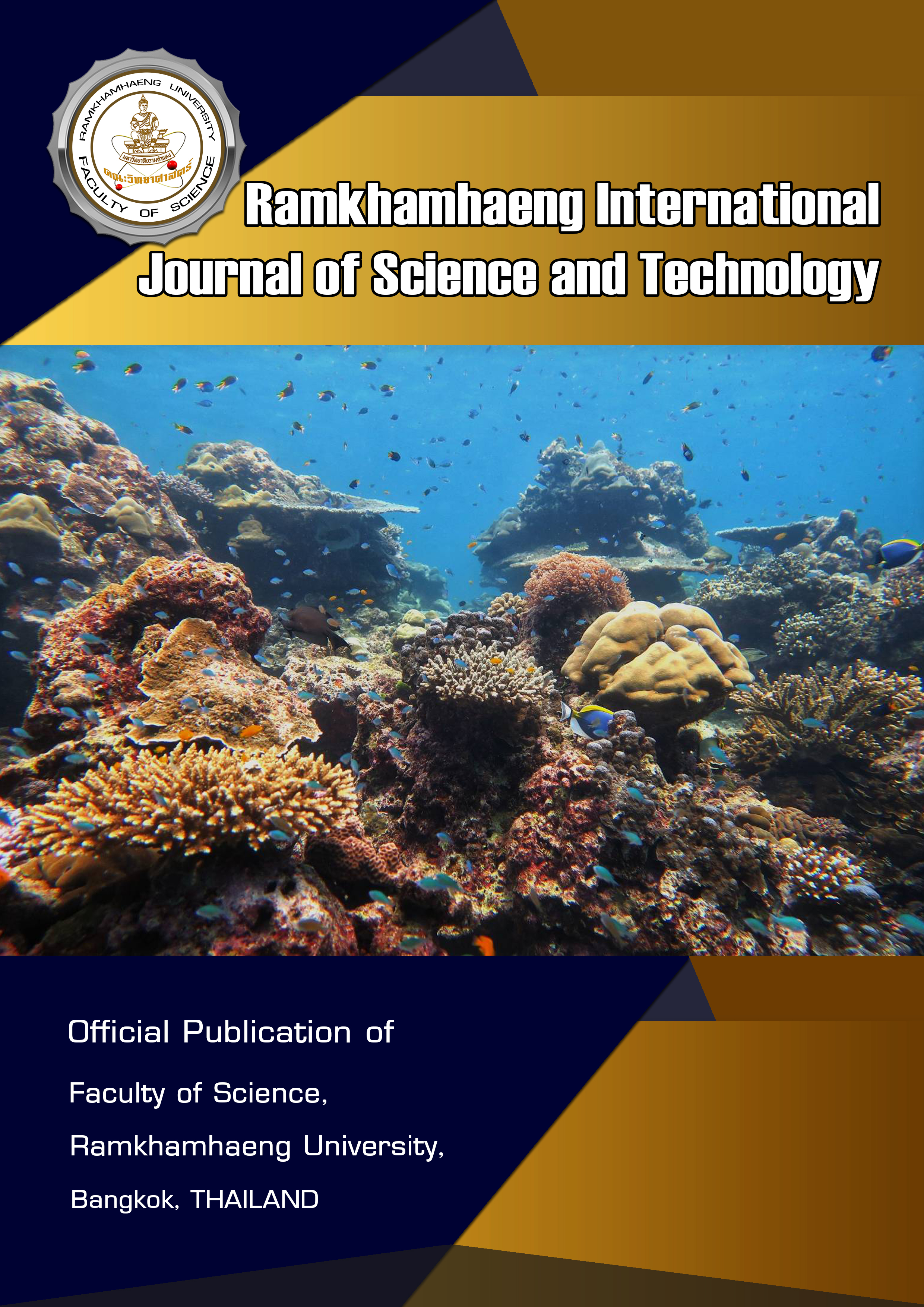Modeling for Prediction of Sludge Accumulation in Septic Tanks
Keywords:
Dynamic modelling, Sludge accumulation, Septic tank, Treatment performanceAbstract
Sludge accumulation in septic tanks usually affects the tank performance and is essential for planning of the sludge emptying frequency and treatment. Based on the laboratory-scale experimental results, material balance analysis of TS and TVS concentrations in the septic tank influent, effluent and accumulation was used to calculate the first-order rate constant of sludge reduction, which was found to be 0.004 d-1. To deal with complex mechanisms in the septic tanks, a dynamic model for sludge accumulation using STELLA software was developed by integrating key factors/equations that represented the septic tank performance. The model was validated by using data from the laboratory-scale septic tank and 8 units of actual-scale septic tanks of peri-urban households, resulting in the R2 values of 0.70 - 0.80 which suggested the applicability of the model in predicting the sludge accumulation in septic tanks. This model should be useful for the septic tank users and municipal officers in planning for emptying the accumulated sludge and creating a modelling platform for describing TS and TVS accumulation in the septic tanks.
References
Haandel AC van and Lettinga G (1994) Anaerobic Sewage Treatment: A Practical Guide for Regions with a Hot Climate. John Wiley & Sons
Koné D and Strauss M (2004) Low-cost Options for Treating Faecal Sludges (FS) in Developing Countries – Challenges and Performance. Paper presented to the 9th International IWA Specialist group conference on wetlands systems for water pollution control; and to the 6th International IWA Specialist Group Conference on Waste Stabilisation Ponds, Avignon, France, 27th Sept. - 1st Oct. 2004.
Koottatep T, Polprasert C, Oanh N, Heinss U, Montangero A and Strauss M (2001) Septage dewatering in Vertical-Flow Constructed Wetlands located in the tropics. Water Science and Technology, 44 2-3, 181-188.
Koottatep T, Surinkul N, Polprasert C, Kamal A, Koné D, Montangero A and Strauss M (2004) Treatment of Septage in Constructed Wetlands in Tropical Climate–Lessons Learnt after Seven Years of Operation. Water Science and Technology, 5 (9), 119-126.
Koottatep T, Surinkul N, Paochaiyangyuen R, Suebsao W, Sherpa M, Liangwannaphorn C and Panuwatvanich A (2012) Assessment of Faecal Sludge Rheological Properties. Asian Institute of Technology, Thailand.
Nwabanne J, Onukwuli O and Ifeakandu (2010) Biokinetics of Anaerobic Digestion of Municipal Waste. International Journal of Environmental Research, 3 (4), 511-516.
Pickford J (1980) The Design of Septic Tanks and Aqua-Privies. Overseas Building Notes,(187), 1-11.
Polprasert C and Koottatep T (2015) Organic Waste Recycling-Technology, Management and Sustainability, Fourth edition. IWA Publishing, London
United Nations Water (2009) Statistic: Graphs and Maps: Water pollution, Environmental Degradation and Disasters, UN-Water website. Retrieved December 16, 2009 from http:// www.unwater.org/statistics_pollu.html.
World Health Organization (WHO), the United Nations Children’s Fund (UNICEF) (2017) Progress on drinking Water, sanitation and hygiene 2017 update and SDG baselines from http://www.unwater.org/publications/whounicef-joint-monitoring-program-water-supply-sanitation-hygiene-jmp-2017-update-sdg-baselines/
Downloads
Published
Issue
Section
License
Copyright Notice: a copyright on any article in the published journal is retained by the Ramkhamhaeng International Journal of Science and Technology. Readers or Users grant the right to use of the Article contained in the Content in accordance with the Creative Commons CC BY-NC-ND license and the Data contained in the Content in accordance with the Creative Commons CC BY-NC-ND.



